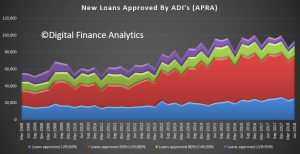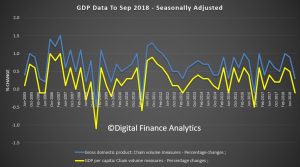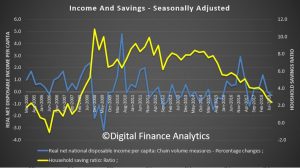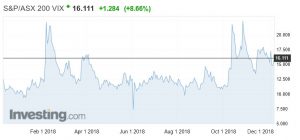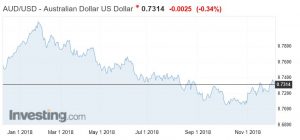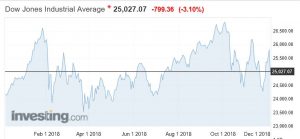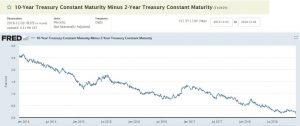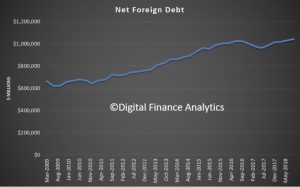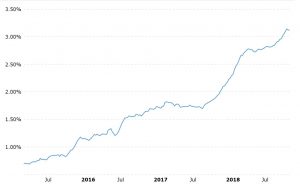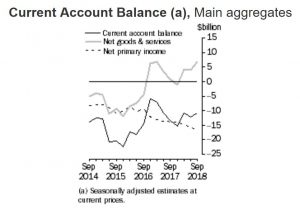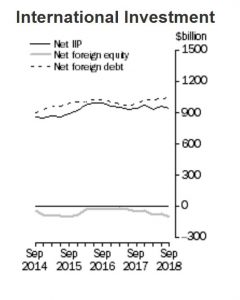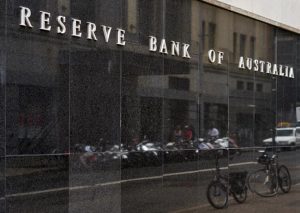As home prices fall, the risk of households with mortgages falling into negative equity is rising. This has the potential to have significant economic consequences for households and the community more generally. I discussed this with Frank Chung from new.com.au yesterday who posted an article based on the DFA analysis. As house price falls accelerate, a growing number of mortgage holders across the country are being left in the negative equity “prison”. Today I want to take that forward.
Negative equity is a simple concept, the mortgage you owe on a property is worth more than the current market value of the property. This means that if a household needs to sell, they would be left with an outstanding debt to the bank. And meantime, because of the higher risk, borrowers might potentially facing higher interest rates.
If you are forced to sell, due to a change of circumstances such as the loss of a job, then you are in trouble. Australia has what’s known as “full recourse”, meaning your debt stays with you regardless of your financial situation.
Why is this so relevant now? Well, first forecasts grow darker for how much further the market has to fall, consensus is beginning to circle around the all-important 20 per cent, with 15 out of 21 economists and experts polled by Finder.com.au backing the figure.
As they put it, “The reason the 20 per cent figure is so crucial is most lenders require a 20 per cent deposit. If you borrow with a 20 per cent deposit and the price falls by 20 per cent, obviously you’re going to be in equity parity — any further and you’re going to be in negative equity. This is the first time we’ve seen decline forecasts starting to push into negative equity territory.”
Data from APRA, the Property Exposures figures showed that banks wrote nearly 26,000 new mortgages with a loan to value ratio of more than 90%, and a further 51,000 with an LVR of between 80 and 90 percent. That is 20% of all loans written in the same period. I would expect these numbers to fall significantly, as lenders tighten their standards further.
But it’s also worth remembering that in some cases existing borrowers have pulled more equity out to allow them to pass funds to their kids – the so called bank of Mum and Dad, and in the case of a forced sale, the market value may well overstate the true recovery value of the property. Using a property as an ATM does not work in a falling market.
Last month, a Roy Morgan survey of 10,000 borrowers found 8.9 per cent were slipping into negative equity — up from 8 per cent 12 months prior — which would work out to around 386,000 Australians.
We have run our own analysis with data to the end of November and on my modelling currently there are around 400,000 households across the country in negative equity, both owner-occupiers and investors. There are about 3.25 million owner-occupier borrowers and at least 1.25 million investors, so around 10 per cent of properties are currently underwater.
As you know we run a range of potential scenarios, but if our central case works out, with an average fall of 20-25 per cent, our modelling suggests that around 650,000 households would fall into negative equity. My more severe case, if an international crisis hits is for a 40 per cent price fall.
Then you’re getting close to one million households. That would be catastrophic for the economy. That’s analogous to what happened in Ireland where prices dropped 40 per cent. A decade later, there are still people in negative equity who’ve never recovered.
The next question to consider is which households are being impacted. In fact, negative equity is touching “lots of different segments” of the market for different reasons, but collectively it is an “early warning sign” for what was to come.
For example, people in Western Australia who bought at the peak of the mining boom, have seen prices fall by about 15 per cent over the past five or six years. In some locations, much more. So there are pockets of negative equity there.
More recent first time buyers perhaps enticed by first homebuyer grants and those who purchased in the past six to 12 months are now underwater, particularly if they bought new properties. This is because newly built properties are losing value faster that more established ones. It’s like buying a new car, as soon as you drive it off the lot it drops about 15-20 per cent in value.
Then there are the highly leveraged property investors, often with overlapping mortgages. “Quite often we see investors with multiple properties all going underwater. That’s the real sharp end of this.
Meanwhile, investors in places like Brisbane who purchased off-the-plan apartments 18 months ago are now being required to “pony up” and complete the purchase, but the valuation is coming in at 15-20 per cent below the original price.
Realestate.com.au chief economist Nerida Conisbee was quoted as saying that will be a problem for people trying to settle because the banks might not lend them what they now owe, and could also be a problem for the developers.
And it’s not just first homebuyers and investors — people living in expensive suburbs are also feeling the pinch, as prices are falling faster at the more expensive end of the market. We are seeing pockets of negative equity in places you wouldn’t expect to see it, like Bondi and Mosman in NSW and Toorak in Victoria. So there are some more affluent households now suddenly find they’ve got issues too.
Now let’s consider the impact. Most obviously, it means you’ve lost any paper profit you had. In fact, negative equity is a real bother, it really does have a very negative impact on the economy, households and the wealth effect – as prices rise people feel more confident, as they fall, the reverse is true.
As you know we believe the problem has been set up for decades by loose lending. There is a massive overhang of very highly indebted households, this was a correction that was always going to come — the question now is how far and how fast.
Negative equity also causes banks to “get twitchy” because it means they now have a risk on their book, which could cause them to put up a borrowers interest rate. This is because as the risk profile on that loan goes up the banks will probably put some sort of risk premium on the loan, and we already know many households are struggling with repayments because of flat incomes and rising costs. We will update our mortgage stress results tomorrow.
People with negative equity had very few options except trying to pay it off and wait for the market to rise. If you do sell, chances are you still have a loan remaining. History teaches us people stay put. It basically means you’re stuck, you’re a prisoner in your own property. You just keep paying off their loan, though if you are an investor, you may choose to sell and get out before the losses get worse. As distressed sales mount, so prices will fall further.
Banks of course should also reappraise the risks in their mortgage books, and will need to lift provisions accordingly, which will depress profitability, and require them to hold more capital.
Realestate.com.au said that people have gotten used to rising prices, but when we look historically the people that do well are those that hold through down and up cycles. If we look at the worst price crash we’ve seen in the ‘80s, it took about four years for prices to recover. You need to be mindful property is a long-term game, it pays to hold, it doesn’t pay to panic sell. And If you do have an investment property and it’s gone underwater but you have a stable tenant and can afford to pay off the loan, “try and get through this cycle”.
“The biggest problem when prices fall is that we start to see distressed sales when people can’t service the loan,” they said.
I agree that the main thing is “don’t panic”. “If you are not forced to sell and can continue to make your payments, it’s a paper problem and most people will be in that situation. But if you are forced to sell, due to a change of circumstances such as the loss of a job, then you are in trouble. Australia has what’s known as “full recourse”, meaning your debt stays with you regardless of your financial situation.
And reflect in this, a decade after the GFC there are still households in Ireland and the UK who remain in the negative equity trap, with little prospect of property values recovering to pre-crash levels a decade later.
It seems to me the path ahead will be a rocky road, and just how big the potholes will be will be determined by the extent of the falls, and the length of the negative equity trap. As prices are still likely to fall further, anyone thinking of buying now needs to be very careful. We are in for a long haul.

